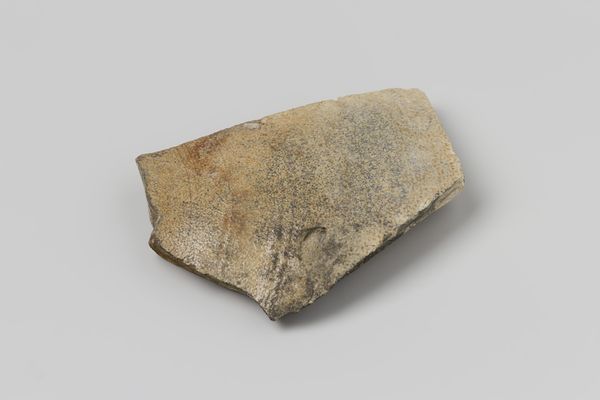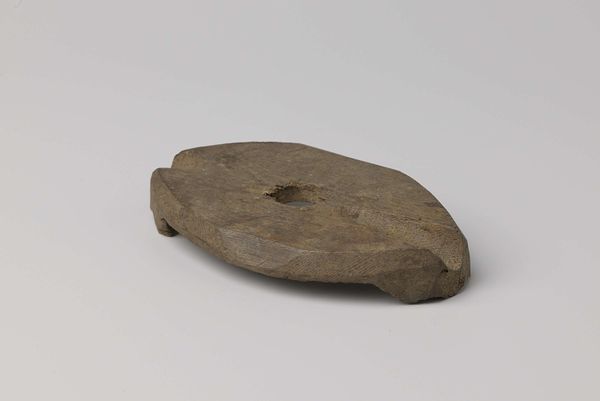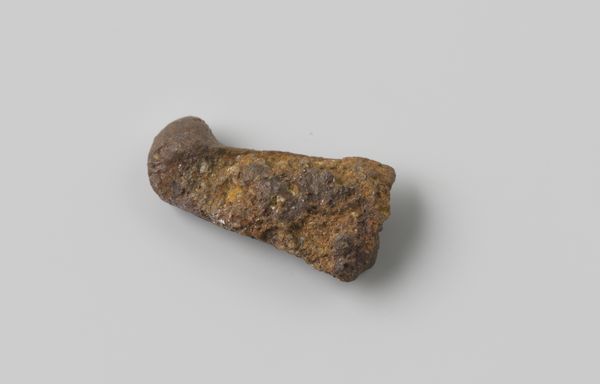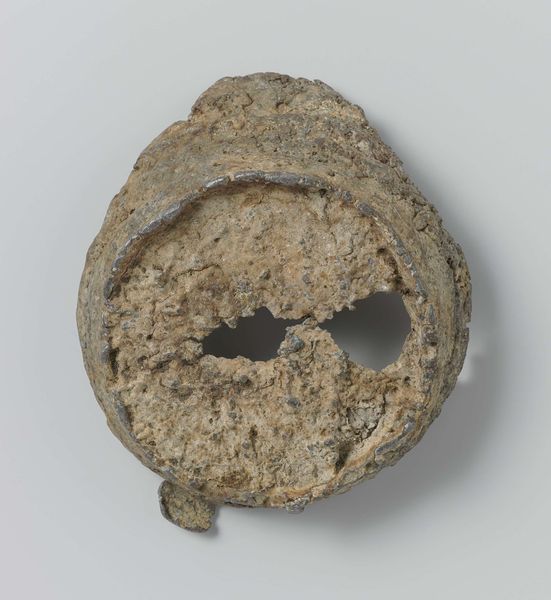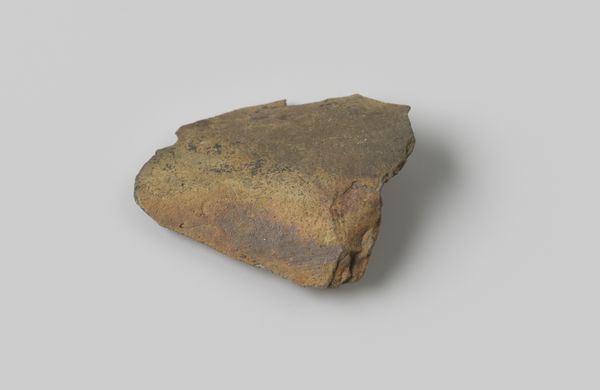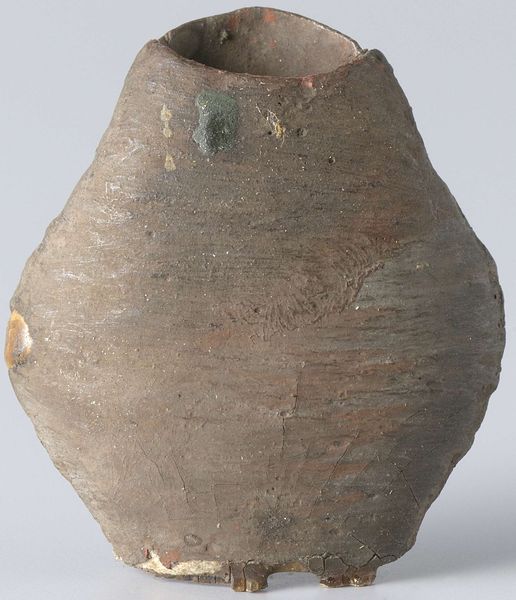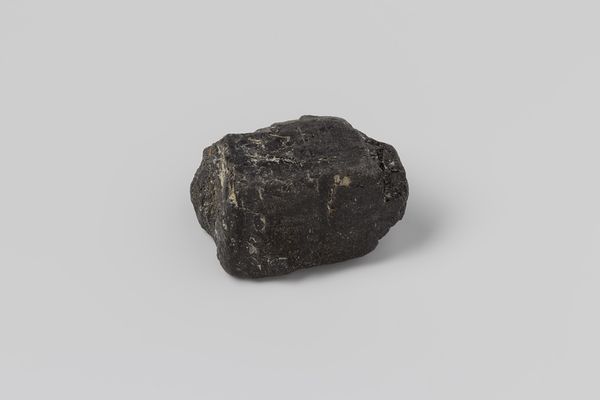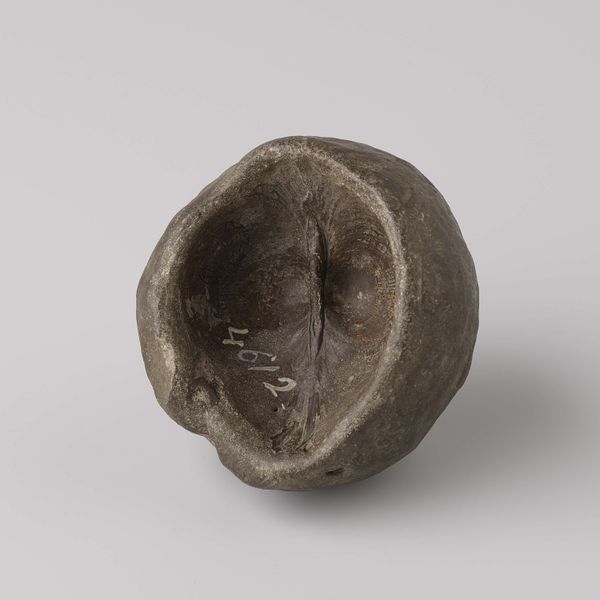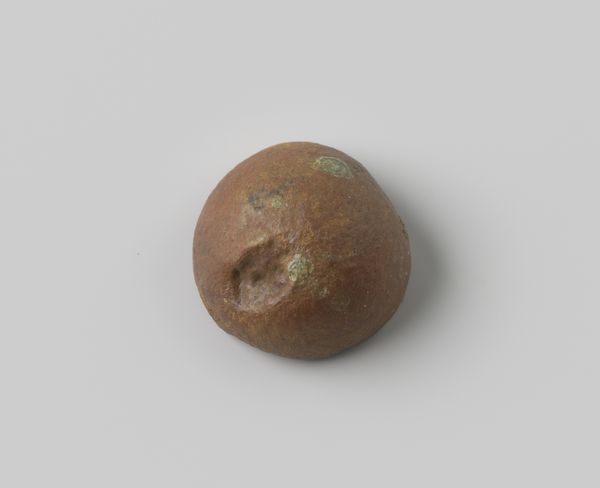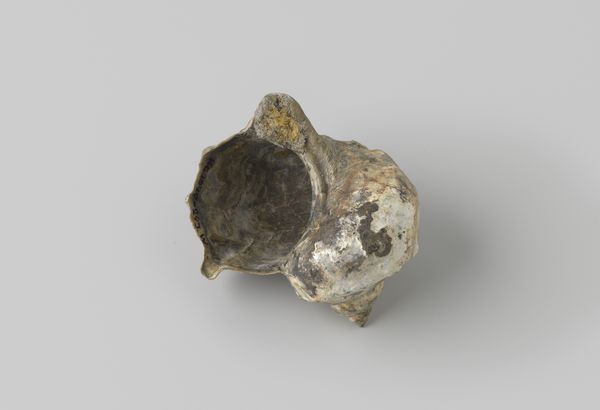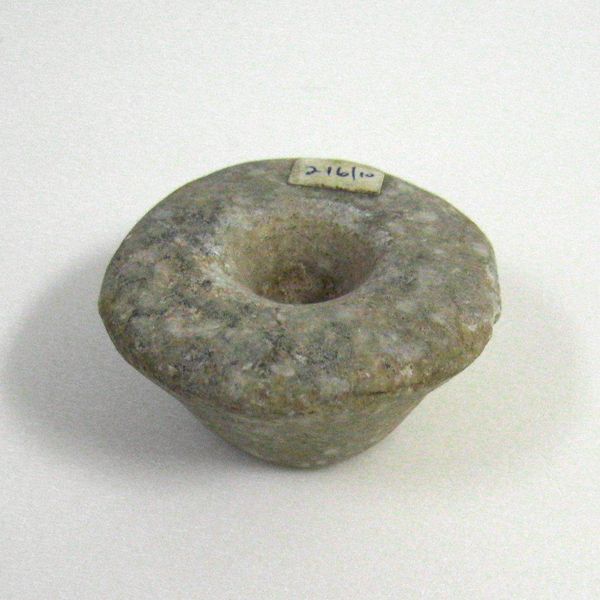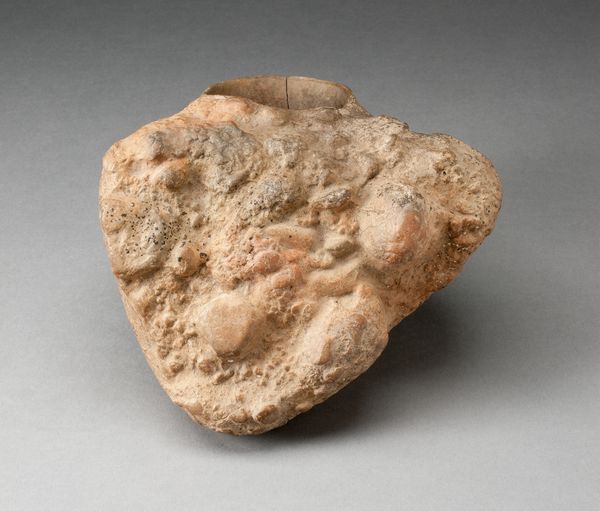
Fragment bestaande uit een klompje lood met in het midden een gaatje c. 1590 - 1596
0:00
0:00
anonymous
Rijksmuseum
assemblage, metal, found-object, sculpture
#
assemblage
#
metal
#
found-object
#
mannerism
#
geometric
#
sculpture
#
ceramic
Dimensions: width 7.3 cm, depth 2.4 cm
Copyright: Rijks Museum: Open Domain
Curator: Today we're examining a fascinating piece here at the Rijksmuseum: an anonymous assemblage from around 1590-1596 titled "Fragment consisting of a lump of lead with a hole in the middle". Editor: My first impression is one of earthy decay and quietude. The lump, with its muted colors and rough texture, has the solemn feeling of something unearthed, ancient. Curator: Indeed. The materiality itself is compelling: lead, a dense and heavy metal, typically used for practical purposes like piping or roofing, presented here almost sculpturally. Notice how the artist has manipulated the medium; there are aspects of Mannerism in this work’s self-conscious artifice, using base materials in place of something like marble or bronze. The surface features a constellation of incidental accretions too, further animating the form. Editor: And the hole is especially striking, puncturing the solid mass. It draws the eye, creating a negative space that almost mocks the substantiality of the lead. Is it simply a void, or does it serve some symbolic purpose? Could it suggest absence, perhaps the futility of earthly endeavours, or a glimpse of something beyond? Curator: Symbolically, one could explore associations with alchemy or even cosmology, depending on the historical context. Alchemists sought to transmute base metals into gold; perhaps the lead itself symbolizes the raw material of existence, imperfect yet holding the potential for transformation. Editor: Or think of the broader history of holes themselves in religious symbology—pierced hearts representing grief or sacrifice. Here, it’s quite ambiguous—it lacks refinement but it speaks to profound themes regardless. Curator: The inherent imperfection of this sculpture prevents any singular reading. Editor: Precisely! Instead, this invites personal interpretation, a space where history, material and imagination can converge. I find this rather moving actually—despite its being, frankly, a ‘lump’. Curator: I concur; it seems a deliberate exercise in the art of reduction; or revealing hidden aesthetic properties in mundane, available materials. Thank you. Editor: Thank you.
Comments
No comments
Be the first to comment and join the conversation on the ultimate creative platform.

